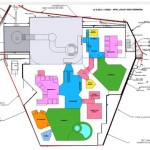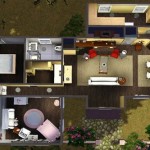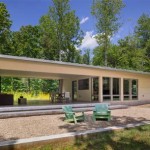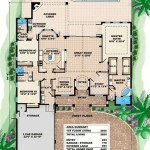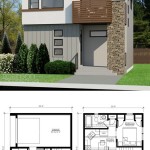House Bed Plans: A Guide to Designing and Building a Dream Bed
House beds have become increasingly popular for children's rooms, offering a fun, whimsical sleeping space that fosters imagination and creativity. Building a house bed can be a rewarding DIY project, but careful planning and execution are essential for a safe and sturdy structure. This article will provide a comprehensive overview of house bed plans, from design considerations to construction tips.
The first step in any house bed project is selecting the right plan. Numerous resources offer free and paid house bed plans online, catering to various skill levels and design preferences. When choosing a plan, consider the child's age, the room's dimensions, and the desired level of complexity. Simple A-frame designs are ideal for beginners, while more intricate plans with added features like windows, doors, and slides may require advanced woodworking skills.
Once a plan is selected, the next step is to gather the necessary materials. Most house bed plans utilize standard lumber sizes, readily available at local hardware stores. Common materials include pine, fir, or cedar boards for the frame, plywood for the base, and screws for assembly. The plan will specify the exact dimensions and quantities required. It's recommended to purchase slightly more material than listed to account for potential errors or modifications.
Before beginning construction, thoroughly review the plan's instructions and diagrams. Ensure all tools and safety equipment are available, including a saw, drill, measuring tape, safety glasses, and ear protection. A well-ventilated workspace is also crucial for safe and comfortable building. Organizing the materials and tools beforehand will streamline the construction process.
Construction typically begins with building the bed frame. This involves cutting the lumber to the specified lengths and assembling the frame using screws and wood glue. Accuracy in measurements and cuts is critical for structural integrity. Regularly check for squareness using a carpenter's square to ensure the frame is straight and stable.
After the frame is assembled, the next step is to attach the slats or plywood base that will support the mattress. The plan will dictate the spacing and placement of the slats or the size of the plywood sheet. Ensure the base is securely fastened to the frame for optimal support.
With the basic structure complete, the focus shifts to adding the house-like features. This can involve constructing the roof, adding walls, and incorporating decorative elements. The roof can be built using angled boards or plywood sheets, depending on the design. Walls can be created using solid panels or spaced slats for a more open feel.
Safety should be a paramount concern throughout the building process. All edges and corners should be sanded smooth to prevent splinters. Avoid using toxic paints or finishes, opting for child-safe alternatives. Ensure the bed frame is stable and secure, capable of supporting the child's weight and movement. Regularly inspect the bed for any loose screws or signs of wear and tear.
Customization options for house beds are virtually limitless. The bed can be painted in vibrant colors or embellished with themed decorations. Adding curtains, fairy lights, or other accessories can further personalize the space. Incorporating storage solutions, such as drawers or shelves beneath the bed, can maximize functionality.
Choosing the right mattress is essential for a comfortable and supportive sleeping experience. Select a mattress that fits the dimensions of the bed frame and provides adequate support for the child's age and weight. Consider factors such as firmness, material, and breathability when selecting a mattress.
Regular maintenance is key to ensuring the longevity and safety of the house bed. Periodically tighten any loose screws and inspect the frame for any damage. Clean the bed regularly with a damp cloth and mild detergent. Repaint or refinish the bed as needed to maintain its appearance.
Building a house bed is a significant undertaking, but the result is a unique and cherished space for a child. Careful planning, precise execution, and attention to safety will ensure a successful and rewarding project. With the right tools, materials, and a well-chosen plan, anyone can create a dream house bed for their child.
Beyond the construction phase, consider the long-term use and adaptability of the house bed. Some plans allow for modifications as the child grows, such as converting the bed into a loft or study space. Thinking ahead about future needs can maximize the bed's lifespan and value.
Finally, remember to involve the child in the design and building process, if appropriate. This fosters a sense of ownership and pride in the finished product, making the house bed a truly special and personalized space. Choosing colors, themes, and accessories together can transform the project into a shared creative endeavor.

Diy Furniture Plans How To Build A Twin House Bed With Platform Chimney The Design Confidential

House Frame Bed Full Size Her Tool Belt

How To Build A Twin Size House Bed Addicted 2 Diy

Diy Furniture Plans How To Build A Storage Base For The Twin House Bed Design Confidential

House Frame Bed Full Size Her Tool Belt

Diy Furniture Plans How To Build A Twin House Bed With Platform Chimney The Design Confidential

House Frame Bed Full Size Her Tool Belt


Diy House Bed Frame Trundle Twin Woodworking Plan Remodelaholic

House Frame Bed Full Size Her Tool Belt

